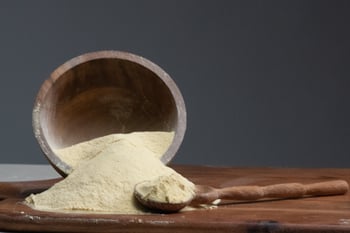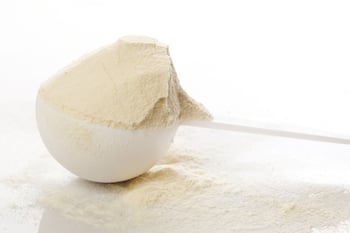 School lunches have been criticized for decades over their reputation for lackluster flavor and questionable nutrition. Cold chicken nuggets and limp pizza rectangles, anyone?
School lunches have been criticized for decades over their reputation for lackluster flavor and questionable nutrition. Cold chicken nuggets and limp pizza rectangles, anyone?
Some schools are enacting their own initiatives to improve nutrition and offer students flavorful and innovative meals with more options than those from our childhood. Let’s take a look at the current state of school lunch nutrition standards, creative menu ideas, and how food manufacturers can learn a thing or two from these schools.
Recommended Guidelines for School Lunch Programs
Growing bodies need proper nutrition, but many children in the U.S. don’t eat enough healthy food, especially those from low-income families. In fact, it’s estimated that as little as 2% of children and adolescents meet USDA diet recommendations. That’s why school lunches and breakfast programs must comply with the Dietary Guidelines for Americans and meet strict federal nutrition standards in order to receive reimbursement.
Schools are required to provide a proper balance of fruits, vegetables, low-fat or fat-free milk, whole grains and lean protein. Recent regulations, however, suggest a weakening of nutritional standards to the shagrin of nutrition experts and parents alike.
Many children’s palates are expanding, however, leading them to become activists within their own schools and promoting healthy eating initiatives that contain innovative recipes using lean proteins such as yogurt.
Yogurt Gaining Attention in School Cafeterias
One of the best forms of lean protein for children and adolescents is low-fat yogurt, a popular meat alternative. While all yogurt contains bone-building calcium, Greek yogurt, in particular, has twice the protein of its regular counterpart.
Recently, a Real School Food Recipe Contest was conducted, encouraging school districts to develop recipes using yogurt to replace less healthy ingredients such as heavy cream, cream cheese, sour cream and mayonnaise. Innovative recipes were developed which needed to meet USDA nutrition guidelines and were tested in school production kitchens.
More importantly, they were taste-tested by students. Winning yogurt recipes were varied and included:
- Very Berry Yogurt Pizza
- Vegilicious Pasta Salad
- Broccoli Cheddar Soup
- Chicken Salad with Fruit
- Curry Turkey Stew
- Maple Peach Muffin
- Whey Good White Pizza
- Summer Squash Lasagna
- And more
Yogurt is increasingly being used in school cafeterias and packaged foods to boost nutrition, and its versatility as an ingredient in soups, entrees, smoothies, dips, salads, baked goods and more is meeting with the approval of students and the average consumer alike.
Overcoming Challenges of Yogurt-Based Recipes
Whether you’re using fresh yogurt in a school cafeteria or in a large-scale manufacturing setting, it comes with major challenges.
Refrigeration requirements and a limited shelf life make it difficult to manage costs and storage space and minimize spoilage. Separation or curdling can occur in fresh dairy ingredients during the cooking process, and high shear can cause viscosity breakdown.
However, the use of dried yogurt powder in formulations, such as Grande PrimoTM Dried Yogurt & Cultured Dairy Products, can eliminate many of the drawbacks of using fresh yogurt while still providing the lean protein and nutrients our bodies need. It allows for low-fat, reduced calorie formulations that provide all the flavor of fresh yogurt while maintaining a rich, creamy texture throughout the production process. Because it’s all-natural, it also complies with clean label initiatives.
Learn more about dried Greek yogurt powder and how it can help food manufacturers comply with new label standards and consumer preferences in our eBook below. Then, contact one of our food scientists to talk through ideas for including dried yogurt powder in your formulation as an alternative to high-cost, high fat dairy ingredients.





